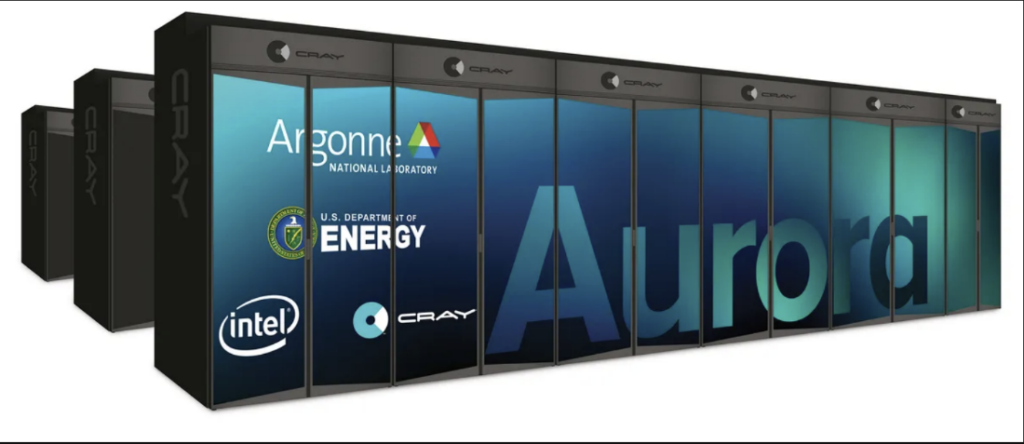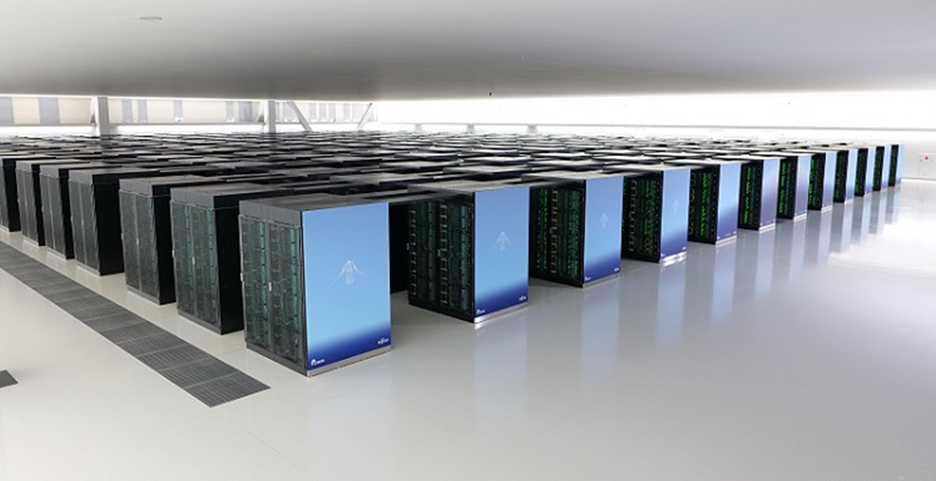The AMD-powered Frontier system maintains its top position in the TOP500 list. The exascale machine, located at Oak Ridge National Laboratory, features AMD Epyc processors and HPE Cray EX235a architecture. Aurora, the Intel-based system at Argonne Leadership Computing Facility, debuts at No. 2, with plans to exceed Frontier’s performance. Eagle, a Microsoft Azure Cloud system, claims the No. 3 spot, marking the highest-ranked cloud system in TOP500 history. The Japanese system, Fugaku at the Riken Center for Computational Science in Kobe, Japan, is now ranked No. 4, and LUMI from Euro HPC/CSC in Finland secures the No. 5 position with significant upgrades.
What do we think? It takes years of planning, lobbying for funding, and preparation to bring a supercomputer to life. Frontier planning was started before Covid. And the planning must take into consideration Moore’s Law—no one wants a computer delivered in 2023 with chips from 2018. Not enough praise is given to the engineers at the National Labs and other supercomputer centers who design and bring these umbering crunching monsters to life.
Frontier is No. 1 in the TOP500, and Aurora, with Intel’s Sapphire Rapids, is No. 2
As is customary, at this year’s superdupercomputer conference (SC23), the 62nd edition of the TOP500 listed the machines with the most FLOPS and the best power management.
The AMD-powered Frontier system retains its top spot and is still the only exascale machine on the list. However, five new or upgraded systems have shaken up the top 10.
Housed at the Oak Ridge National Laboratory (ORNL) in Tennessee, Frontier leads the pack with an HPL score of 1.194 EFLOPS—unchanged from the June 2023 list. Frontier is built using AMD Epyc 64C 2GHz processors and is based on the latest HPE Cray EX235a architecture. The system has a total of 8,699,904 combined CPU and GPU cores. Additionally, Frontier has an impressive power efficiency rating of 52.59 GFLOPS/W and relies on HPE’s Slingshot 11 network for data transfer.
The new Aurora system at the Argonne Leadership Computing Facility in Illinois entered the list at the No. 2 spot—previously held by Japan’s Fugaku—with an HPL score of 585.34 PFLOPS. That said, it is important to note that Aurora’s numbers were submitted with a measurement on half of the planned final system. Aurora is currently being commissioned and will reportedly exceed Frontier with a peak performance of 2 EFLOPS when finished.

Aurora is built by Intel and is based on the HPE Cray EX—Intel Exascale Compute Blade, which uses Intel Xeon CPU Max Series processors and Intel Data Center GPU Max Series accelerators. These communicate through HPE’s Slingshot 11 network interconnect.
Another new system, named Eagle and installed in the Microsoft Azure Cloud in the US, has taken the No. 3 spot. This is the highest rank a cloud system has ever achieved on the TOP500. In fact, it was only two years ago that the previous Azure system was the first cloud system ever to enter the top 10 at spot No. 10. This Microsoft ND v5 system has an HPL score of 561.2 PFLOPS and is based on Intel Xeon Platinum 8480C processors and Nvidia H100 accelerators.
Fugaku has moved to its current ranking of No. 4 after achieving No. 2 in the June 2023 list and holding the No. 1 spot from June 2020 until November 2021. This system is based in Kobe, Japan, and has an HPL score of 442.01 PFLOPS. It remains the highest ranked system outside the US.
The LUMI system, based at Euro HPC/CSC in Kajaani, Finland, achieved the No. 5 spot with an HPL score of 379.70 PFLOPS, a jump from its score of 309.10 PFLOPS. This system is the largest in Europe and has seen multiple upgrades that keep it near the top of the list. The supercomputer Fugaku, jointly developed by Riken and Fujitsu, has successfully retained the top spot for eight consecutive terms in multiple major high-performance computer rankings.

Fugaku’s full complement of 158,976 nodes fit into 432 racks and scored 16.00 PFLOPS.
Epilogue—bragging points
AMD powers 140 systems on the latest Top500 list—including Frontier, which has been named the fastest supercomputer in the world four times in a row—a 39% year-over-year increase.
- Frontier is the only supercomputer to pass the exaflop barrier, at 1.194 exaFLOPS with only 22.70MW of energy consumed, good enough for No. 8 on the Green 500 List.
- To put that into perspective, Aurora, the No. 2 system on the Top500 list, achieved 585 PFLOPS of performance, with half the cores of Frontier, using 24.69MW of energy.
- AMD powers 80% of the top 10 most energy-efficient supercomputers in the world based on the latest Green500 List.
In concert with the report, Intel announced 23 new systems debuting in the overall TOP500 list, in collaboration with laboratories, universities, and OEMs. Those supercomputers are among the first to install and deploy the Intel Data Center GPU Max Series, the Intel Xeon CPU Max Series, and 4th Gen Intel Xeon Scalable processors.
You can see all the new machines here.